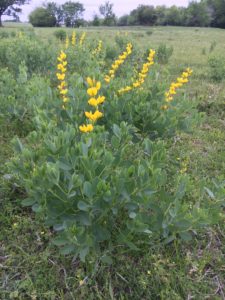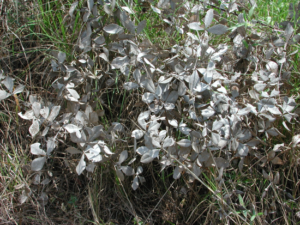Source: Texas A&M AgriLife Extension | March 15, 2019
by Vanessa Corriher-Olson, associate professor and forage extension specialist, Soil & Crop Sciences, Texas A&M AgriLife Extension, Overton
Yellow False Indigo (Baptisia sphaerocarpa) have a very wide, natural range to which they seem well adapted. It is native to the lower Midwest and Gulf states.
As a group, these perennials are deer resistant, heat and humidity tolerant and drought tolerant.
Height and width vary by species. It grow up to 2 to 3 feet tall by 2 to 4 feet wide with upright stems. Flower spikes are 12 to 15 inches long with large, bright yellow flowers held above bright green foliage.
Most indigo species bloom in March, April or early May, but it varies depending on species, region and weather. Bloom typically lasts between 3 and 6 weeks. Leaves are trifoliate (composed of three leaflets) and are arranged alternately along the stems. Leaflet shapes vary from slender oblong to almost rounded oval. Leaves vary in color from blue-green to bright yellow-green to soft, felted gray-green. Leaves turn black rapidly in summer/fall.
Plants prefer rich, deep and well-drained soil, but tolerate poor, sandy soil as well.
Select Herbicide Options:
Grazon P+D
Tordon 22K
RemedyUltra
Pasturegard HL
Surmount
REMEMBER: THE LABEL IS THE LAW! Always read the pesticide label before using.
ForageFax is by the Texas A&M AgriLife Extension Department of Soil & Crop Science, offering timely forage and pasture information.


